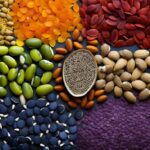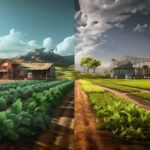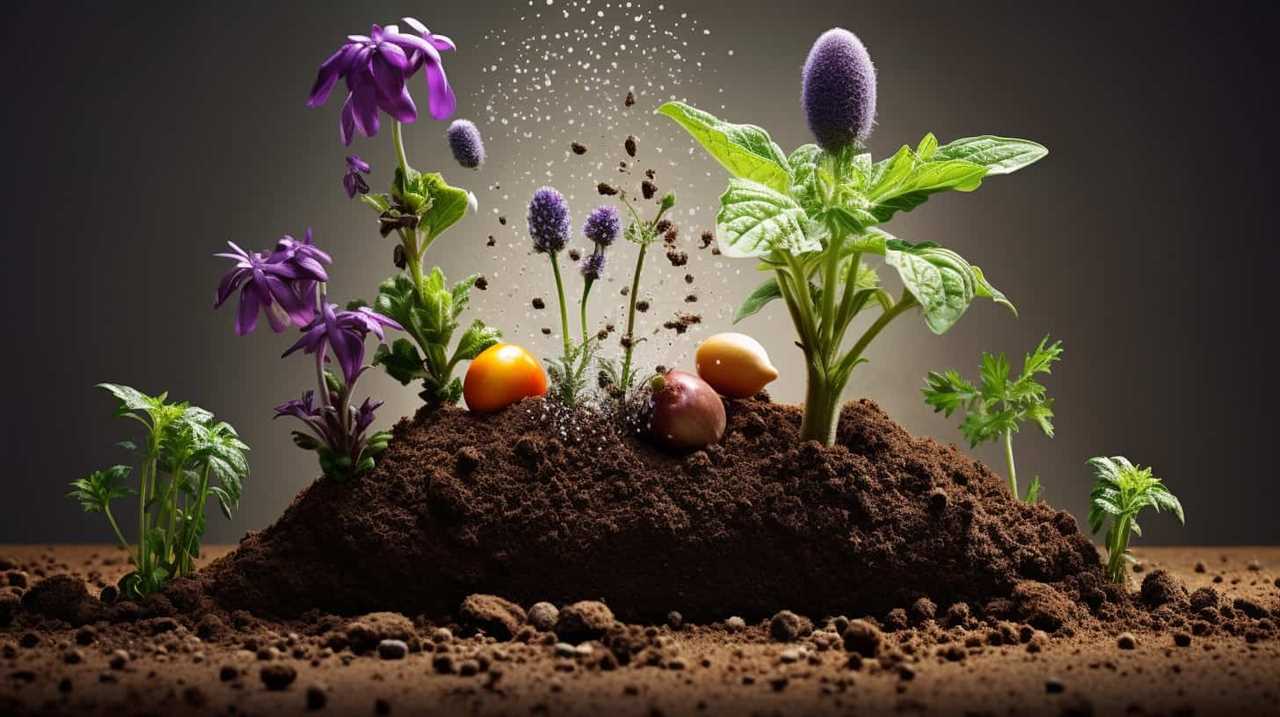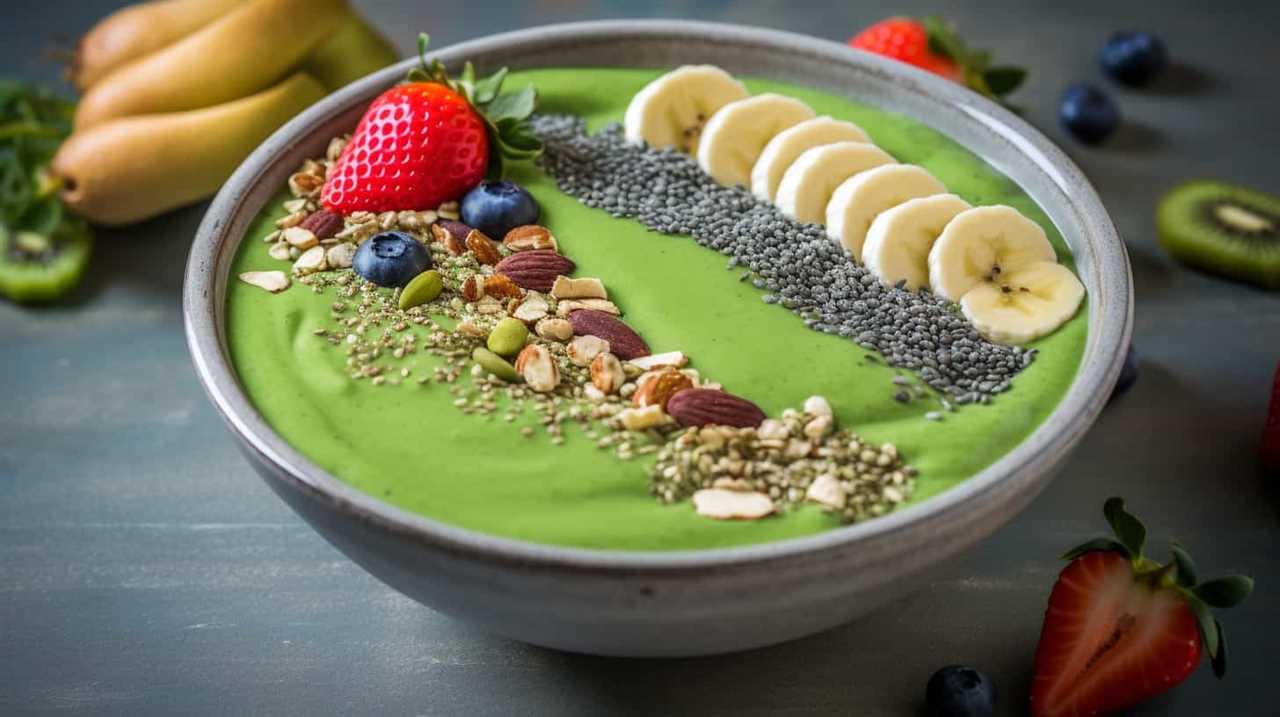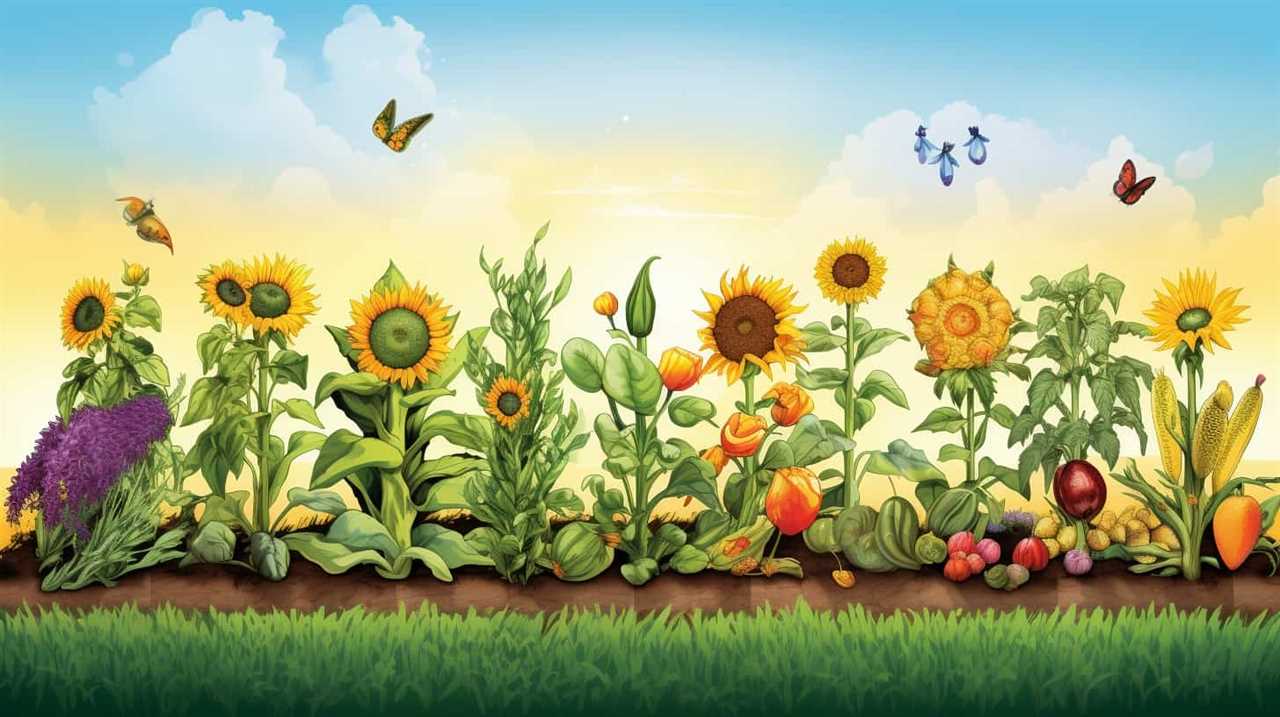Looking for a sustainable and profitable agricultural venture? Look no further than commercial chia seeds farming. We have pinpointed seven key benefits that showcase the huge potential of this industry.
With high demand, multiple revenue streams, and low investment costs, chia seeds farming offers a promising opportunity for financial success. Plus, sustainable farming practices and the long shelf life of chia seeds provide export potential.
Join us as we delve into the data and explore the exciting world of commercial chia seeds farming.
Key Takeaways
- Chia seeds have a high demand in the market due to their health benefits and versatility in recipes.
- The growing demand for chia seeds presents significant profit potential for farmers.
- Chia seeds farming requires minimal resources and inputs, resulting in lower production costs.
- Chia seeds can be processed into value-added products, such as chia oil or chia flour, commanding higher prices.
High Demand for Chia Seeds
In our experience, the high demand for chia seeds has been a driving force in our profitable commercial farming operation. The increasing popularity of chia seeds has created a lucrative market opportunity for us.
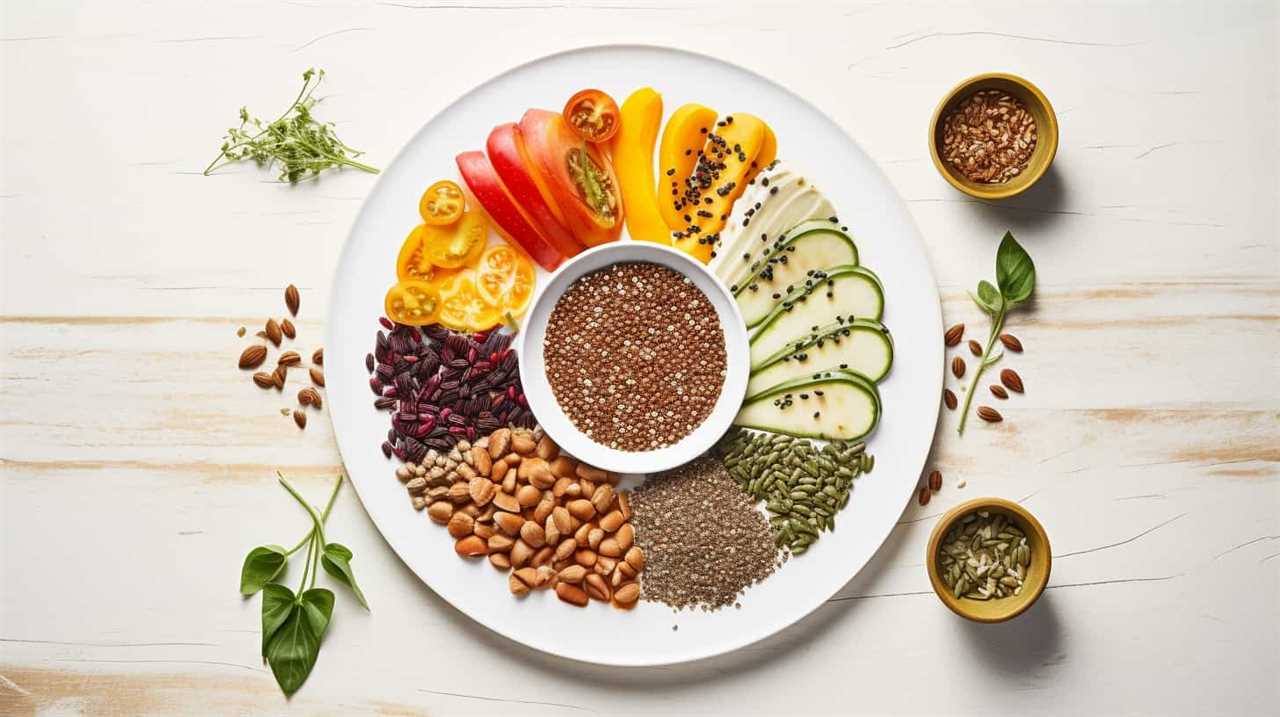
According to market research data, the demand for chia seeds has been steadily rising over the past few years. This upward trend can be attributed to the growing awareness of the health benefits associated with chia seeds, such as their high fiber and omega-3 content. Additionally, chia seeds are versatile and can be easily incorporated into various recipes, making them appealing to a wide range of consumers.
Our farming operation has been able to capitalize on this demand by consistently producing high-quality chia seeds to meet the market needs. This hasn’t only resulted in a steady stream of revenue but has also positioned us as a reliable supplier in the industry.
Lucrative Market Opportunities
We have identified two important points regarding the lucrative market opportunities in commercial chia seeds farming.
Firstly, there’s a growing demand for chia seeds in the market, driven by their numerous health benefits and versatility in culinary applications. This increasing demand presents a significant profit potential for farmers who can tap into this market.
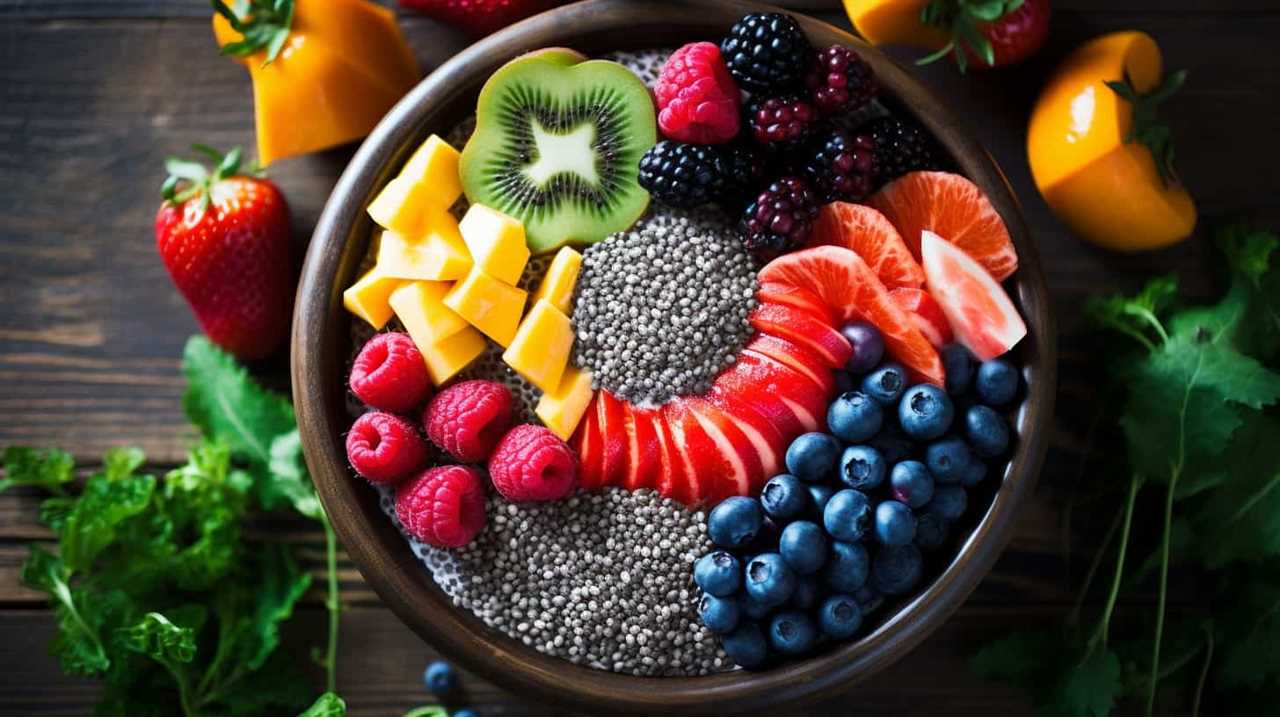
Secondly, the high profit potential of chia seeds farming is further supported by the fact that chia seeds command a higher price compared to other crops, due to their nutritional value and scarcity in the market.
Growing Demand for Chia
The market for chia seeds is experiencing a significant surge in demand, presenting lucrative opportunities for commercial farmers. The rising popularity of chia seeds can be attributed to their numerous nutritional benefits.
Chia seeds are rich in fiber, omega-3 fatty acids, protein, and antioxidants, making them a highly sought-after superfood. With consumers becoming more health-conscious and actively seeking out nutrient-dense foods, the demand for chia seeds has skyrocketed.
According to market research, the global chia seed market is projected to reach a value of $1.5 billion by 2025, with a compound annual growth rate of 34.4%. This exponential growth in demand opens up a wealth of opportunities for commercial farmers to capitalize on the chia seed market and generate substantial profits.

High Profit Potential
With such a growing demand for chia seeds, commercial farmers can capitalize on the high profit potential and lucrative market opportunities that await them.
Chia seeds have gained popularity due to their nutritional value and versatility, making them a sought-after ingredient in various industries, including food, health, and cosmetics.
The profitability of chia seeds farming lies in the fact that it requires minimal resources and inputs, resulting in lower production costs. Additionally, the market for chia seeds is expanding rapidly, both domestically and internationally, providing ample opportunities for financial gain.
Chia seeds have a long shelf life and can be easily stored and transported, making them an ideal crop for commercial farmers looking to maximize their profits.

As we explore the multiple revenue streams in chia seeds farming, it becomes evident that the high profit potential of this industry is a compelling reason for farmers to venture into commercial chia cultivation.
Multiple Revenue Streams
When it comes to commercial chia seeds farming, one of the key advantages is the ability to tap into multiple revenue streams. By diversifying income opportunities, farmers can maximize their profits and minimize risks.
Chia seeds can be sold as a standalone product, used as an ingredient in various food and beverage products, or even processed into value-added products like chia oil or chia flour, providing versatile revenue generation options.
Diversified Income Opportunities
As we explore the profitable aspects of commercial chia seeds farming, it becomes evident that a key factor contributing to the success of this venture is the presence of diversified income opportunities through multiple revenue streams.

Here are four examples of how chia seed farmers can capitalize on these opportunities:
- Value added products: By processing chia seeds into various products such as chia oil, chia flour, or chia beverages, farmers can command higher prices and tap into niche markets.
- Global market expansion: With the increasing demand for chia seeds worldwide, farmers have the opportunity to export their products to different countries, expanding their customer base and increasing their revenue.
- Contract farming: Partnering with food companies or health supplement manufacturers to grow chia seeds on contract can provide a stable income stream, as these companies often offer fixed prices and guaranteed off-take.
- Eco-tourism: Chia seed farms can attract visitors by offering educational tours, workshops, or farm stays, providing an additional source of income.
Versatile Revenue Generation
To further maximize profits and ensure a stable income, chia seed farmers can explore versatile revenue generation through multiple streams. By diversifying their income opportunities, farmers can tap into various markets and adapt to changing consumer demands. One way to achieve this is through organic farming practices, which not only cater to health-conscious consumers but also fetch premium prices in the market. Additionally, chia seed farmers can consider global market expansion by exporting their products to countries where the demand for chia seeds is growing rapidly. This can be facilitated through partnerships with international distributors or by participating in trade shows and exhibitions. By adopting these strategies, chia seed farmers can create a sustainable business model that is resilient to market fluctuations and provides a steady source of income.
| Revenue Streams | Benefits |
|---|---|
| Organic Farming | Premium prices, health-conscious consumers |
| Global Market Expansion | Access to growing markets, increased demand, higher profits |
Low Investment Costs
One advantage of commercial chia seeds farming is the affordability of investment costs. This makes it an attractive option for individuals or businesses looking to start a scalable business model with the potential for expansion. Consider the following benefits:
- Low initial investment: Chia seeds farming requires minimal capital investment, making it accessible to a wide range of entrepreneurs.
- Cost-effective equipment: The equipment needed for chia seeds farming is relatively inexpensive and readily available, further reducing investment costs.
- Affordable land requirements: Chia plants can be grown in various climates and don’t require large tracts of land, minimizing the need for expensive land purchases.
- Low operational expenses: Chia seeds farming has low operational costs, including water and fertilizer requirements, allowing for higher profit margins.
Sustainable Farming Practices
We will now explore the sustainable farming practices that contribute to the profitability of commercial chia seeds farming. Implementing regenerative agriculture techniques and organic farming methods can have a significant impact on the overall success of chia seed production. These practices not only promote environmental sustainability but also enhance the quality and market value of the final product.
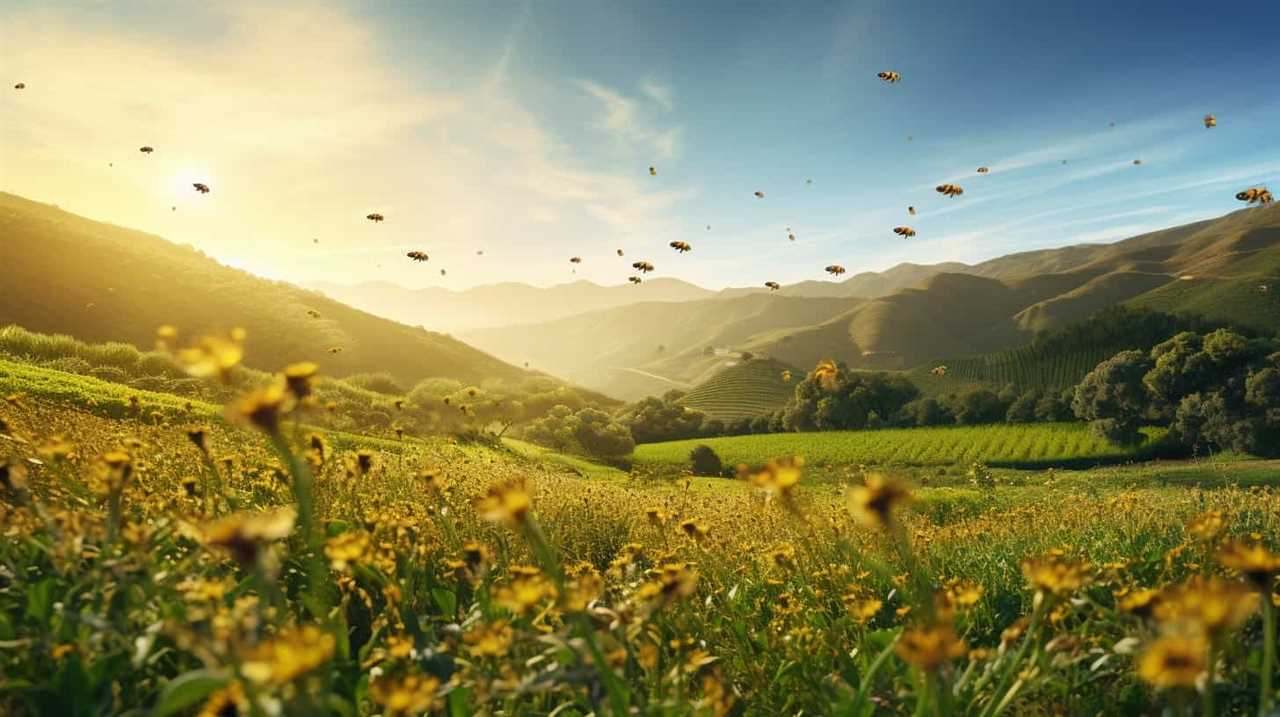
| Sustainable Farming Practices | Benefits | Implementation |
|---|---|---|
| Regenerative Agriculture | Soil health improvement | Crop rotation and cover cropping |
| Enhanced biodiversity | Intercropping and agroforestry | |
| Organic Farming | Reduced chemical input | Biological pest control |
| Higher market demand and premium | Certification and labeling |
By adopting regenerative agriculture practices such as crop rotation and cover cropping, farmers can improve soil health, leading to increased chia seed yields. Additionally, incorporating intercropping and agroforestry techniques can enhance biodiversity, creating a more resilient and sustainable farming system.
Organic farming methods, which involve reduced chemical input and reliance on biological pest control, not only promote environmental health but also respond to the growing market demand for organic products. By obtaining certification and proper labeling, chia seed farmers can access premium markets and command higher prices for their produce.
Long Shelf Life and Export Potential
As we delve into the profitable aspects of commercial chia seeds farming, it’s important to consider the long shelf life and export potential of this versatile crop. Chia seeds have gained popularity not only for their nutritional value but also for their ability to stay fresh for extended periods of time, making them an ideal product for export.
Here are four key points to consider:
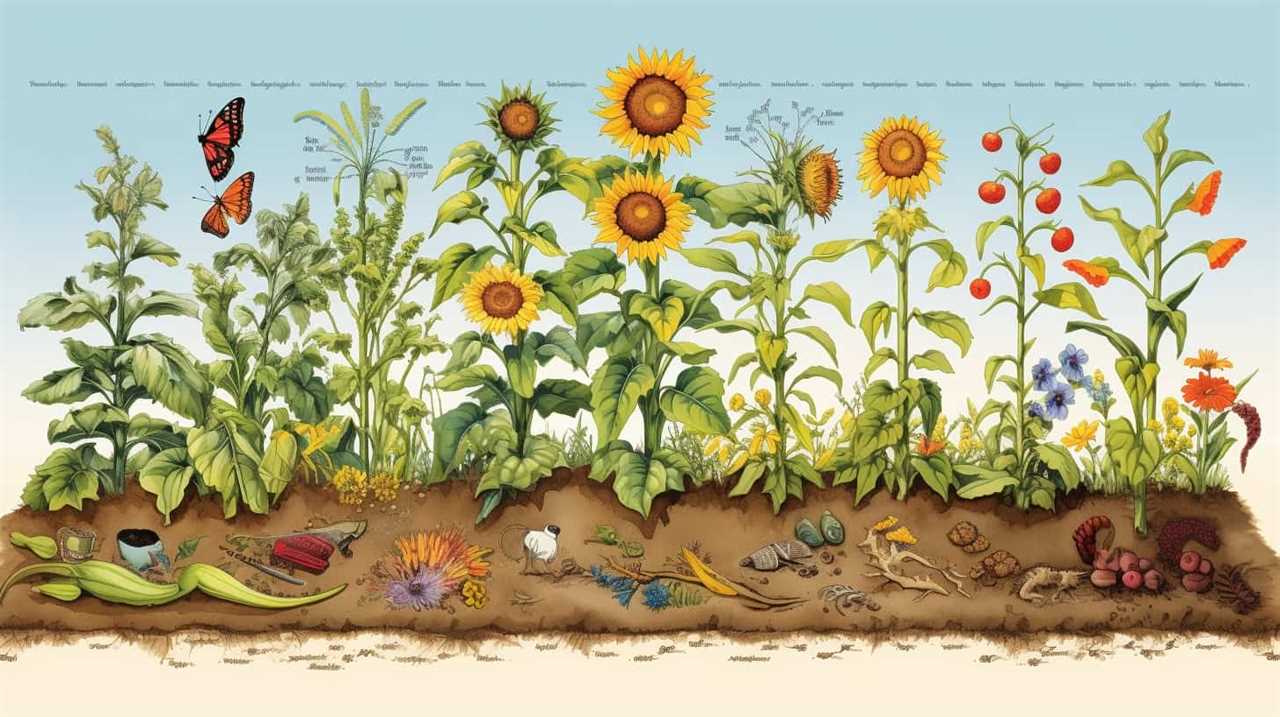
- Chia seeds have a shelf life of up to five years, allowing farmers to store and sell them without worrying about spoilage.
- The demand for chia seeds is growing globally, especially in countries like the United States, Canada, and Australia, presenting lucrative export opportunities.
- Chia seeds are lightweight and compact, making them easy to transport and ship to international markets.
- With the rise in health consciousness and the increasing demand for natural and nutritious foods, chia seeds are becoming a sought-after ingredient in various industries, including food, beverage, and cosmetic.
Considering the long shelf life and export potential of chia seeds, it’s evident that investing in commercial chia seeds farming can be a profitable venture.
Increasing Health Consciousness and Consumer Demand
The rising health consciousness and increasing consumer demand for chia seeds have played a significant role in the profitability of commercial chia seeds farming. As more people become aware of the importance of healthy eating, chia seeds have gained popularity due to their numerous nutritional benefits. Chia seeds are rich in omega-3 fatty acids, fiber, protein, and antioxidants, making them a valuable addition to a balanced diet. This trend in the food industry has created a high demand for chia seeds, both domestically and internationally. To highlight the impact of this trend, let’s take a look at the following table:
| Food Industry Trends | Nutritional Benefits |
|---|---|
| Increasing focus on healthy eating | High in omega-3 fatty acids |
| Demand for superfoods | Rich in fiber and protein |
| Growing interest in plant-based diets | Abundance of antioxidants |
This data clearly demonstrates the alignment between the increasing health consciousness and consumer demand for chia seeds, making commercial chia seeds farming a profitable venture.
Conclusion
In conclusion, commercial chia seeds farming offers numerous profitable aspects for entrepreneurs. With the high demand for chia seeds in the market and multiple revenue streams, this industry provides excellent opportunities for financial success.
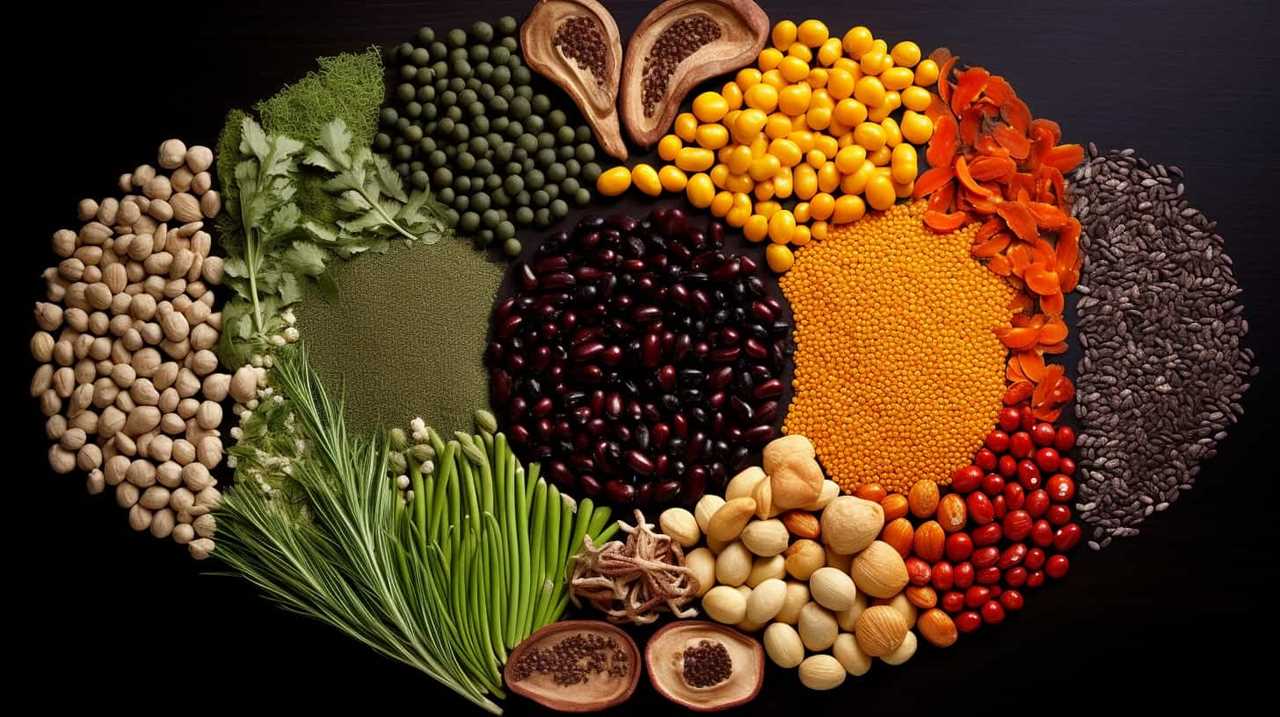
Moreover, the low investment costs and sustainable farming practices make it an attractive option for those looking to enter the agricultural sector.
Interestingly, studies have shown that the global chia seeds market is projected to reach a value of $2.44 billion by 2025, indicating a promising future for this lucrative industry.




